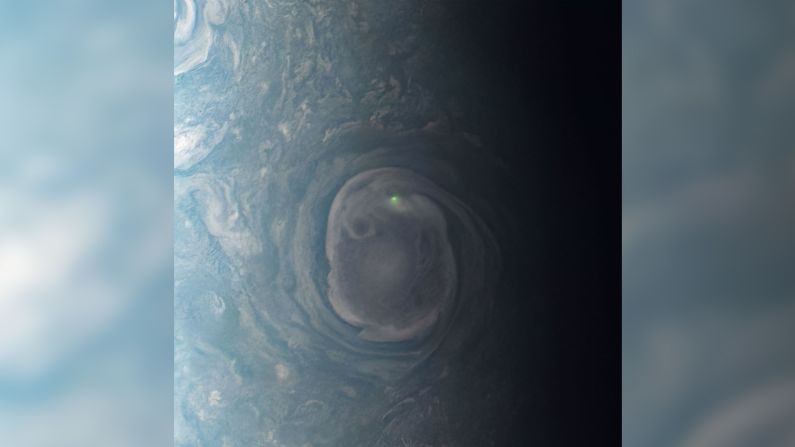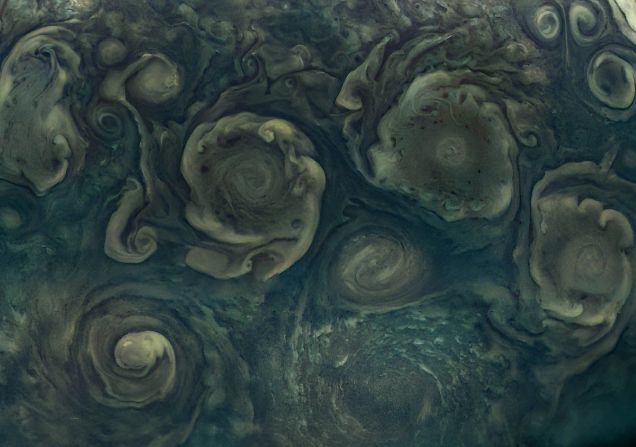Story highlights
Cassini is over, but other missions continue to explore our solar system
Missions are underway for Mars, Jupiter and the edge of our solar system
Do you miss seeing all those amazing new images of Saturn? It’s because Cassini is gone.
The Cassini mission to explore Saturn and its moons ended September 15, concluding a 13-year stream of awe-inspiring photos and observations that changed the way scientists look at the gas giant. There aren’t currently plans for another spacecraft to take a return trip to the ringed planet, although NASA has accepted proposals for future missions.
Even as skywatchers mourn Cassini, it’s worth remembering what’s next.
It may be our solar system, but astronomers say there is still so much we don’t know about our home within the Milky Way galaxy. Plenty of other spacecraft are out there exploring – specifically Mars, Jupiter and even Pluto and objects on the edge of the solar system.
Just look at the New Horizons mission, exploring the deepest reaches of our solar system – most definitely where no man has gone before.
New Horizons is preparing for a New Year’s Day 2019 flyby of Kuiper Belt object MU69, the most distant object any spacecraft has explored, according to the flight plan recently announced by NASA. That’s 1 billion miles beyond Pluto and more than 4 billion miles from Earth.
The spacecraft performed an eye-opening flyby of the ice dwarf Pluto and its moon Charon in July 2015. Although Pluto was discovered in 1930, astronomers had very little information about the surface appearance or even its exact size.
Pluto is the underdog that’s been called a planet and then not a planet, but New Horizons put it back in the spotlight as a fascinating ice dwarf that has surprises in store and is still guarding many mysteries. New Horizons has helped reveal four additional moons around Pluto.
A paper in September collected all the amazing things we’ve learned about it during the 2015 flyby. During the flyby, it also showed Pluto and Charon to be active geological worlds.
Here’s what we learned:
Pluto has heavily cratered surfaces and features mountains of water ice, a hazy blue atmosphere and glaciers made of nitrogen gas, methane and carbon monoxide. New Horizons identified and mapped water ice on the surface for the first time. There is also evidence of a subsurface ocean.
New Horizons also showed that Charon has a red polar region, as well as sunken mountains and landslides on its surface. Chasms and rifts hint that the moon was once smaller but increased its radius and grew at some point.
What else is going on out there?
Two weeks before Cassini plunged into Saturn during a final science dive to observe the planet’s atmosphere, the Juno mission at Jupiter captured an incredible image during its eighth flyby of the planet since arriving on July 4, 2016.
Juno’s goals include understanding how Jupiter formed and evolved, observing its auroras, measuring water and ammonia in the deeper atmosphere, mapping the magnetic field and looking for the evidence of a solid core at the heart of the gas giant.
Juno, meet Jupiter
On Mars, the two rovers, Curiosity and Opportunity, continue exploring the Red Planet, sending back photos of the surface and searching for signs of past life.
Opportunity landed on Mars in 2004 and has outlived its original plan for a 90-day mission. Curiosity celebrated its five-year anniversary since landing in August. Both rovers have found evidence that conditions were once fit for ancient life, as well as signs of active, ancient organic chemistry.
NASA's Mars Curiosity Rover
Future missions include a Mars rover that will be able to “hear” the Red Planet, launching in 2020.
Over 13 years, Cassini revealed insights about Saturn, its rings and how they operate, the complexities of its moons, the history of the solar system and planet formation and even the other places in our solar system where life might exist: ocean worlds.
That spacecraft and its instruments have inspired future missions to these ocean worlds. Launching in the 2020s, the Europa Clipper mission will explore Jupiter’s icy moon, which may be the best bet for finding life beyond Earth.
































































































































